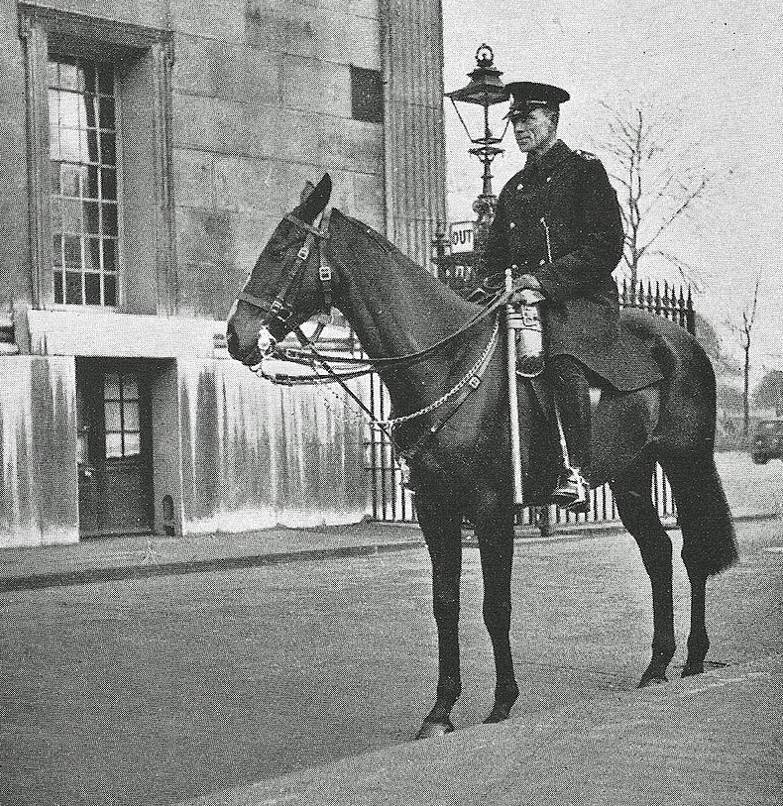Every major city in the world is decorated with famous arches, a monumental structure originally invented by the Romans for triumphal marches.
2 notable arches in London resemble the ones constructed by the Romans, and neither one of them still stands in its original location.
In this article, we’ll take a closer look at some of the most interesting facts about the Wellington Arch, a fascinating structure in London with a remarkable history.
1. It’s located on the corner of 2 famous parks in central London
The monumental arch in London is located in the utmost southeastern corner of Hyde Park, one of the most famous parks in London. It’s the most prominent structure of Hyde Park Corner and borders another famous park in the city called Green Park.
Both parks feature some of the most astounding palaces in the world, Kensington Palace in the western part of Hyde Park and Buckingham Palace on the southern edge of Green Park.
The location of the arch is called Constitution Hill and it’s located on Apsley Road, just walking distance away from the renowned museum in London called the Apsley House. This is the London Townhouse of the Duke of Wellington and houses the Duke’s collection of fine art.
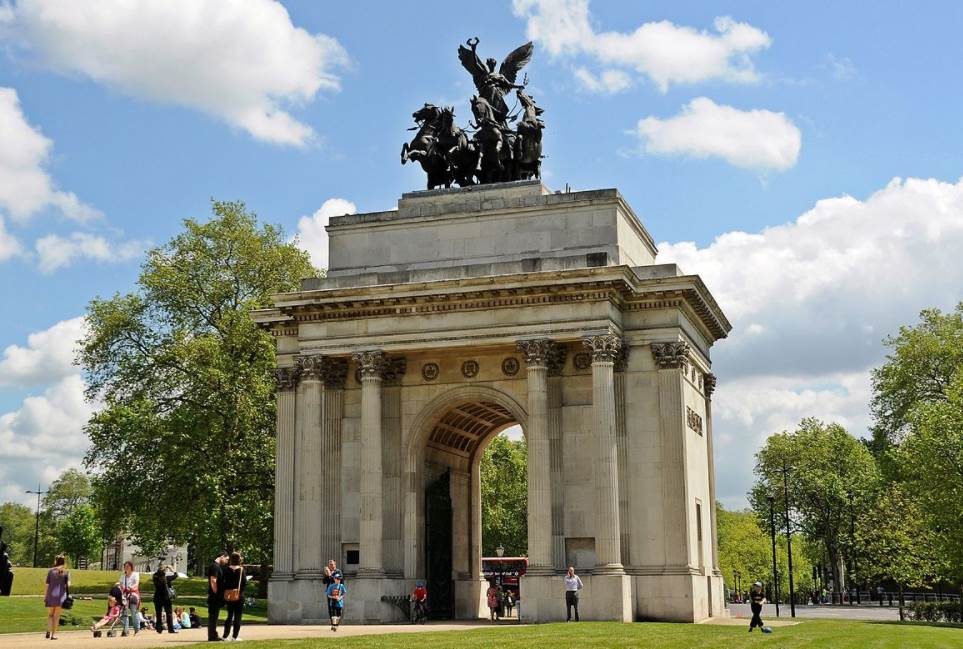
2. It was designed by a renowned British Neoclassical architect
The arch was designed by one of the most renowned British architects of the 19th century, a man named Decimus Burton (1800-1881). His contributions to the architectural landscape in London and beyond are immense and especially in the area of Hyde Park.
It was commissioned by King George IV to commemorate the victories of the British during the Napoleonic Wars. This was a time that it was decided to renovate Hyde and Green Park, a project that started in 1825.
Hyde Park Corner was to become one of the most impressive areas of London, especially considering the vicinity of both royal palaces. Burton’s main contributions were both Wellington Arch and the nearby Hyde Park Screen.
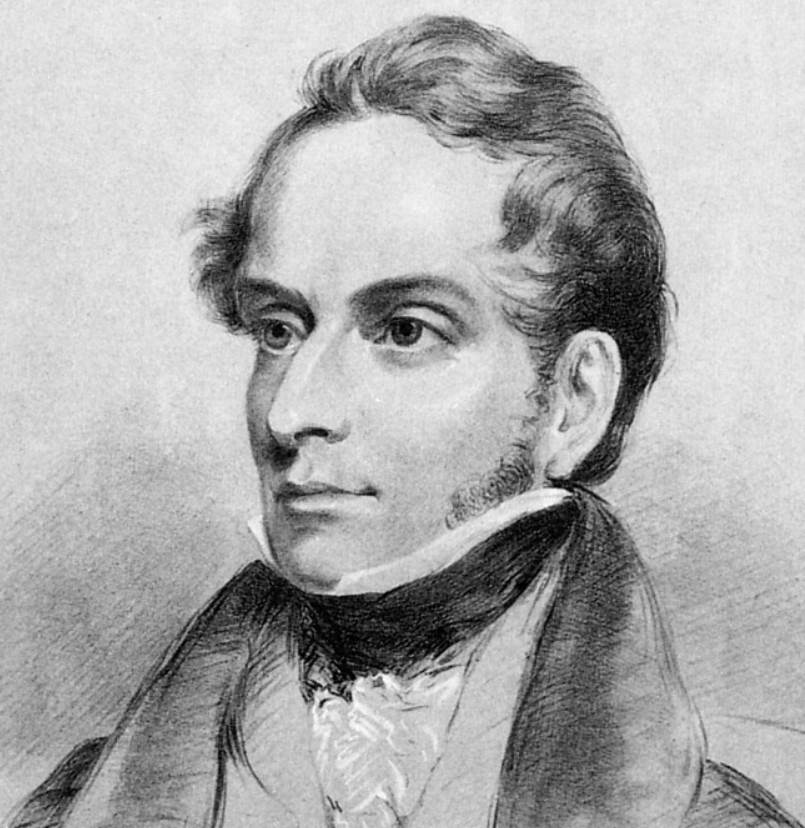
3. It was once topped by the largest equestrian statue in Britain
Burton didn’t intend the arch to be decorated with a monumental statue but rather a small quadriga. This makes it all the more remarkable that an enormous equestrian statue of the Duke of Wellington was hoisted on top of it in 1846.
This enormous artwork is now referred to as the “Wellington Statue” and was sculpted by Matthew Cotes Wyatt (1777-1862), a famous English artist during the Victorian era.
It was the largest sculpture in Britain upon completion with dimensions of 910 × 790 centimeters (30 × 26 feet) and a weight of 40 tonnes.
Tye sculpture depicts Arthur Wellesley, 1st Duke of Wellington (1769-1852), the man who led the British to victory in the Battle of Waterloo. Today, this statue can be found in Aldershot just southwest of London.
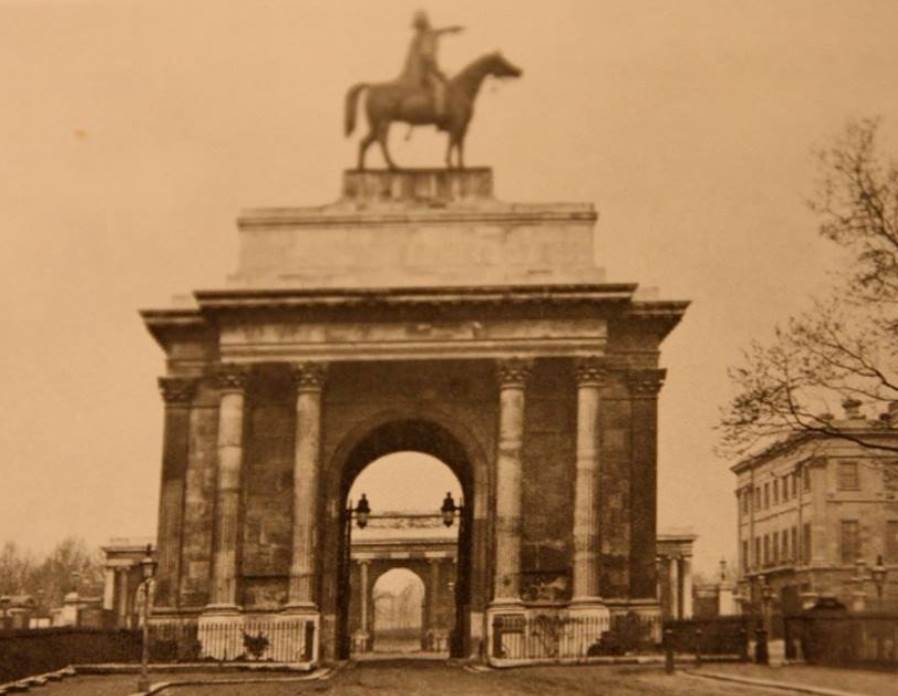
4. The structure was moved to its current location in the 1880s
Marble Arch is another famous monumental arch in London that once decorated the area in front of the main façade of Buckingham Palace. It was designed by John Nash and completed in 1827 and moved to its current location on the orders of Decimus Burton in 1851.
One of the most fascinating facts about the Wellington Arch is that it was also moved to another location. This was more a practical move because its original location in the middle of Hyde Park Corner was already congested with traffic in the late 19th century.
The massive equestrian statue of the Duke of Wellington was moved to Aldershot and the arch was moved to the top of Constitution Hill between 1882 and 1883.
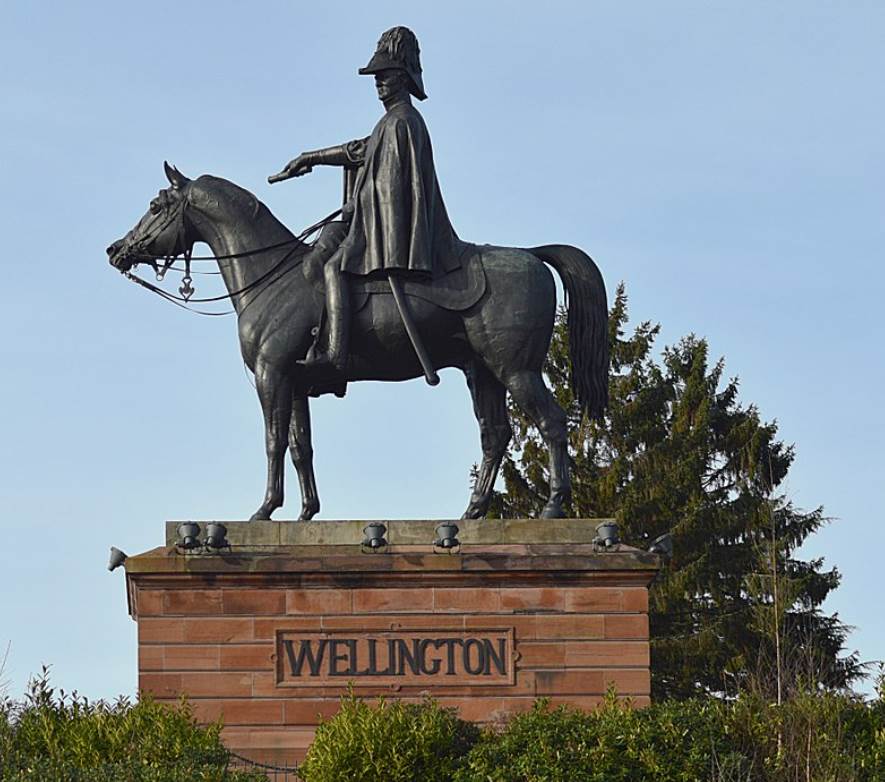
5. The arch is a tourist attraction and features an observation platform
Many triumphal arches not only serve their purpose as monuments to be admired but also have a practical function. The Wellington Arch is no different because it can be accessed by tourists.
For a small fee, you can enter the arch and discover an exhibition that provides information about the structure’s history. As you climb to the top you can access the viewing platform which provides an amazing view of London and the surrounding area.
The arch is a Grade I-listed building and has been managed by Engish Heritage since 1999. This is a charity that manages over 400 structures and monuments in the United Kingdom.
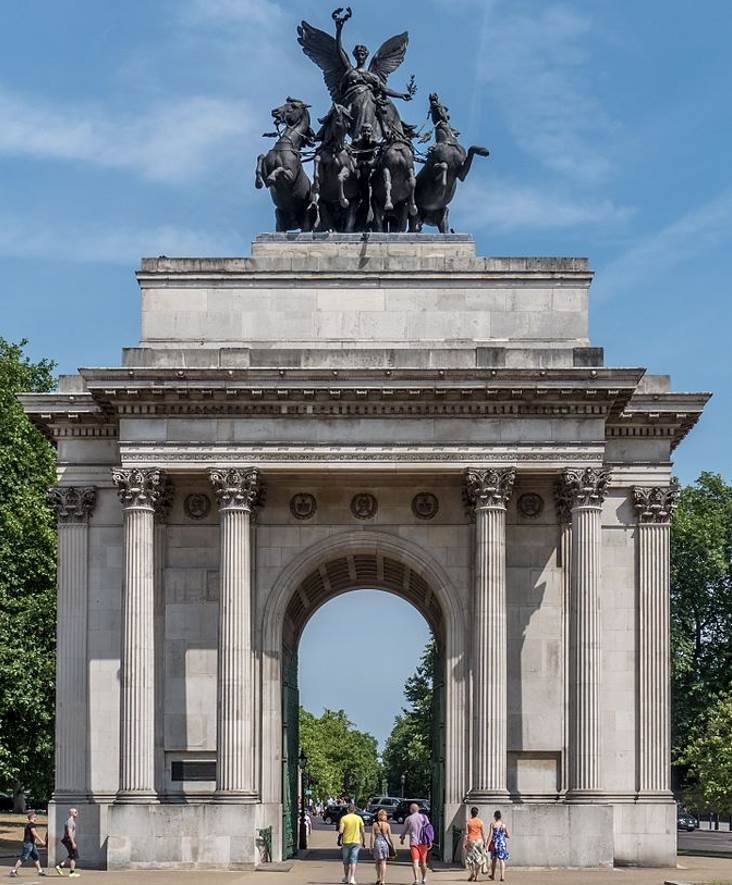
More interesting facts about the Wellington Arch
6. Burton originally designed an arch that was based on the Arch of Titus, one of the most famous arches in Rome. This design was rejected by the committee in charge of the project.
They intended to have an arch that was modeled on the Arch of Constantine, another arch in Rome that stands right next to the Colosseum. Burton eventually redesigned a completely new arch based on models found in the Roman Forum.
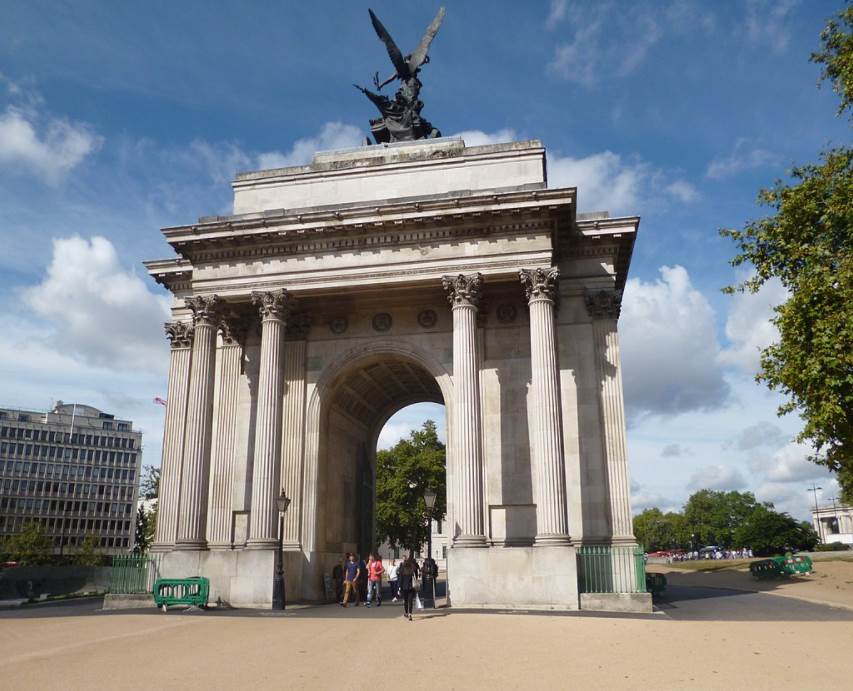
7. Although the arch is magnificently decorated and features Corinthian columns, the idea was to make it a lot more exuberant than it eventually was.
The main reason was a lack of funds since King George IV had spent quite a bit of money on the renovation of Buckingham Palace. Regardless of this notion, the arch was instantly admired by the people and considered to be “one of London’s best-loved landmarks.”
8. The Wellington Statue was removed in 1882, the same year that the arch was moved to its current location. It wasn’t until 1912 that the current sculpture was added to replace it.
The quadriga that currently decorates the arch was designed by English sculptor Adrian Jones (1845-1938). The name of the sculpture is “Peace descending on the Quadriga of War” and it was added to the arch as a memorial for King Edward VII (1841-1910).

9. The arch isn’t just a tourist attraction but also has a remarkable practical function. Half of the arch is used as a ventilation shaft for the Hyde Park Corner road underpass. This was constructed between 1961 and 1962 and the arch was integrated into the structural design of this underpass.
10. Perhaps even more fascinating is that the other half of the arch was once the home of the smallest police station in London. This station was operational until 1992, quite amazing indeed!
